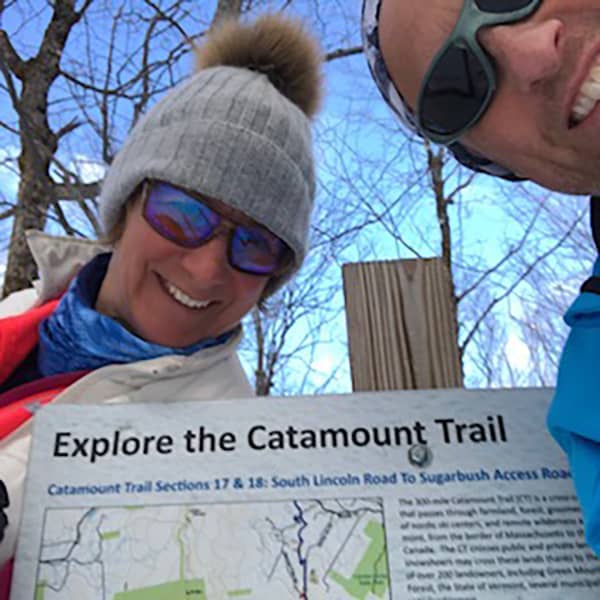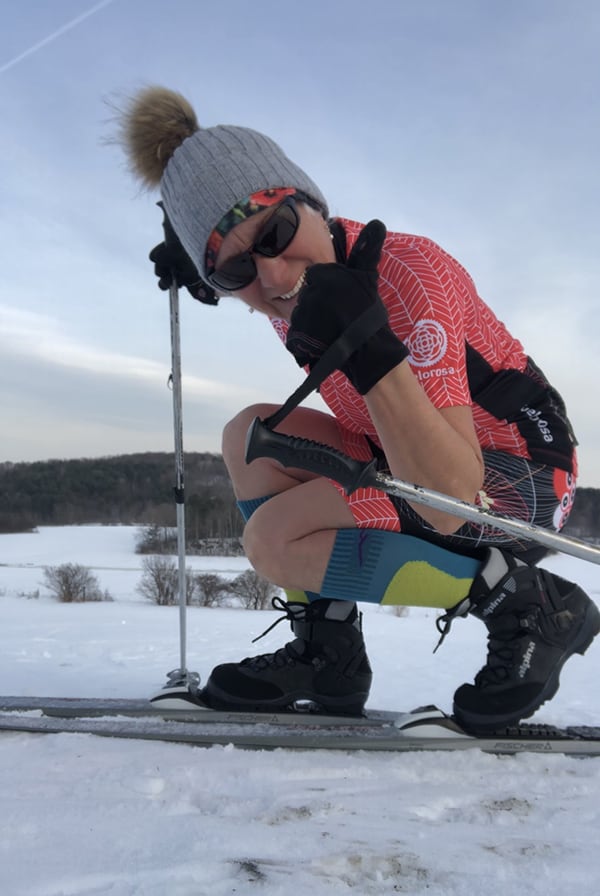By Sandra Dee Owens
At some point in my life, I decided to go solo.
I did not get divorced, or leave my friends, family, or home. I simply started minding my own business.
While raising our daughters in my 20s and 30s, I had neighborhood girlfriends also raising children. We would frequently walk, hike, or cross-country ski together and it was lovely. But I began to notice a behavior pattern in myself that concerned me.
My motivation to go outside and play—was dependent on others.
If a friend and I planned to meet up, but she or her children got sick, my motivation to go anyway, diminished. Invariably the ‘later’ gremlin piped up, “Uh, I’ll go out later, or tomorrow, yeah, tomorrow is better, I’ll go tomorrow.”
Once this gremlin had my ear, it became easier and easier, to not go out. Tying my wellness to others meant too much downtime, as a higher level of motivation was needed to go outside and play as an adult than as a child.
As the years went by and neighbors moved away, I saw a need to shift my relationship with the “later” gremlin to maintain a healthier lifestyle.
So I embraced solo.
It took time to shift from being motivated by others—to something new. Having relied on friends, I slowly began to view the outdoors as my playmate.
What was mother nature offering up today? What outdoor activities did I feel like doing? What was fun for me?
365 seasons a year
With this change in perspective, I envisioned a new type of calendar for myself. A calendar with 365 seasons a year in it. A calendar that celebrates the unique weather and conditions—of that day. Instead of judging the weather as good or bad, I asked myself what it had to offer.
Did fresh snow fall during the night I could ski on? Were the nearby creeks and ponds covered in smooth, thick ice for skating? Were the roads dry enough for a bike ride?
Though it took time, money, and effort to gather gear and clothing (some of it new, but much of it used), all I needed to start—was a pair of sneakers.
Having struggled with ill health as a younger woman, I knew it was easier to maintain wellness than try and get it back once gone.
Being unhealthy—hurts. Being healthy feels good.
To feel good all year long, I keep three activities per (traditional) season going, so that weather conditions do not dictate my wellness. If one activity is a washout, I have a backup.
Though it took time to change a deep-seated belief that I could not run due to chronic back problems, I was determined to rid myself of the “I can’t” gremlin. Now, this out-my-door, year-round activity is a staple. Even in winter, my spiked running shoes handle ice safely and easily.
Once I made the shift to minding my own business, the “later” gremlin diminished. It did not go away, it just got easier to push through it.

Sandra Dee Owens and Will Skerret took a break from Nordic skiing for a selfie on the Catamount Trail, near Lincoln Gap.
The down side
For years, I did not consider that going solo had a downside. But it does. And now I am facing a new challenge.
Recently, I joined a large group of Nordic skiers for two multi-day tours on the longest ski trail in North America. The Catamount Trail. For the past six winters, I have been skiing sections of this 311-mile trail in Vermont’s wilderness from Massachusetts to the Canadian border.
At the start of this past winter (2021/22), I had eight sections remaining. Setting a 61st birthday goal to complete it, a friend suggested I join a couple of multi-day tours the Catamount Trail Association (CTA) sponsors each winter.
I hated the idea. Having become accustomed to solo, or very small groups, I bristled at the idea of skiing with a big group. But I signed up and prepared with a sour attitude. Meeting near the Canadian border in January with the temperature on my car’s dash of minus 24°F, I wasn’t the only one nervous about the 15.1-mile ski we were undertaking that day. Too cold to meet-and-greet, we piled our skis, packs and gear into each other’s vehicles and headed to the trailhead.
All day long, we skied, sweated and froze. And I groused.
Whenever someone in the group stated how nice it was to ski together, I replied I did not like skiing in large groups, preferring solo or small groups instead.
How rude!
Finally, on the last day, the sun and temperature rose enough for a more relaxing ski. A woman skiing alongside me remarked how fun it was to have skied with the group. I replied with my standard. Skiing off ahead of me, she called over her shoulder, “Yes, but you can ski alone any day.”
And she was right. That is exactly what I did every day. I skied alone, skated alone, went snow swimming alone. Almost everything I did, I did alone. Because that is what I had become accustomed to. Living in Vermont where there is more space and land than people, I had adapted to solo in order to stay motivated and healthy.
But my lifestyle had made me bristle at playing with others. It was my way—or no way.
So I went home and thought about this and realized—I wasn’t very friendly.

Friendly
In order to silence the “later” gremlin, I had become very good at solo. But it had created an imbalance. A friend imbalance.
When I looked up the word “friendly” in the dictionary it said: “. . . showing kindly interest or goodwill. Taking these words to heart, I have begun making time for people I had not before.”
As written in a January 2022 Mayo Clinic article: “‘Friendships: Enrich your life and improve your health,” … “To meet new people who might become your friends, you have to go to places where others are gathered. Don’t limit yourself to one strategy for meeting people. The broader your efforts, the greater your likelihood of success.”
I had limited my friends to those who did what I wanted to do.
Now I feel a friend balance beginning, and it feels nice.
And every morning, I assess what season du jour it is, grab the appropriate gear—and go outside and play.
To learn more about Sandra visit: sandradeeowens.com.



